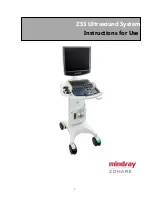
SC105 CS I/O to RS-232 Interface
6
Table 5-1. Approximate Range, miles and km
Data Rate
19 Gauge (0.9 mm)
24 Gauge (0.5 mm)
26 Gauge (0.4 mm)
bps
miles
km
miles
km
miles
km
9,600
6.2
10.0
2.8
4.5
2.0
3.3
1,200
7.6
12.2
3.4
5.5
2.5
4.0
5.1
RAD Modem
– Two Way
4-WIRE UNCONDITIONED
TELEPHONE LINE
OR
TWO TWISTED PAIRS
SRM
9 TO 25 PIN
ADAPTOR
SC105
DATALOGGER
PC
SRM
Figure 5-1. Two Way Communication
When using Campbell Scientific’s datalogger support software to communicate
through the SC105/RAD modem, “Set-up” the link as a direct connect between
the datalogger and the desired COM port. Start two way communication using the
Connect
button on the tool bar and the
Connect
button in the
Connect
window.
5.2
RAD Modem Wiring and Grounding
Figure 5-2 shows a typical set-up of the RAD modems. Installation is as follows:
1.
Set the DCE/DTE switch on the back of the RAD modem connected to the
SC105 to DCE. For a RAD modem connected to a PC, set the DCE/DTE
switch to DCE. For a RAD modem connected to a serial printer, set the
DCE/DTE switch to DTE.
2.
Select a cable with two or more twisted pairs. A recommended direct burial
rodent resistant cable is listed below. They also sell several gopher resistant
cables for even greater protection.
Company
Part Number
AWG.
Anixter
F-02P22BPN
22
Tel: 847-677-2600
www.anixter.com
3.
Wiring connections are made as shown in Figure 5-2. Note wires labelled A
and B are one twisted pair of the cable. Wires labelled C and D are the other
twisted pair.
4.
Transients induced on the communication line may damage any electronics
connected at either end of the line. To decrease the chances for damage,
spark gaps should be installed as shown in Figure 5-2. The transient
protection shown may be purchased from Campbell Scientific (pn #5563
shown in Figure 5-2, pn #6536 includes a plastic case, pn #6361 includes
hardware for mounting to ground lug of Campbell Scientific enclosures
models ENC10/12, ENC12/14, or ENC16/18). Spark gap wiring is straight
through such that pin to pin continuity exists between the two modems. If
the modems are installed entirely within a building, the transient spark gap
protection is probably not needed.




































